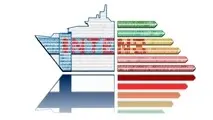LNG promises greener shipping
Liquefied natural gas (LNG) bunkering is a new technique for refueling LNG-powered ships. The process, which is generally used in ship-to-ship refueling but can also be deployed in ports and vehicle-to-ship transfers, is an important part of the push to make the shipping industry more environmentally friendly.

Liquefied natural gas (LNG) bunkering is a new technique for refueling LNG-powered ships. The process, which is generally used in ship-to-ship refueling but can also be deployed in ports and vehicle-to-ship transfers, is an important part of the push to make the shipping industry more environmentally friendly.
LNG is recognized as a more environmentally friendly fuel option as it reduces emissions of sulfur oxide by 100 percent, nitric oxide by between 15 and 80 percent and carbon dioxide by 25 percent compared to other fuel options.
Environmental issues are increasingly important in Korea as the government sets a target to reduce fine dust emissions by 30 percent. The government is introducing new policies to shut down power plants, but the shipping industry also produces fine dust.
According to the Ocean & Fisheries Science Institute, ship emissions also have a serious impact on the environment. One container ship produces as much sulphur oxide as 50 million diesel cars, and as much fine dust as 500,000 trucks.
The government recently unveiled a new policy to promote LNG-fueled ships, starting by adopting the fuel on new government-owned ships. The government will also work with other industry players to allow LNG-powered vessels to dock in Korean harbors for free in order to promote the more environmentally friendly fuel.
The Korea Gas Corporation (Kogas) is leading the development of LNG bunkering in Korea, and plans to establish a new base for the LNG shipping industry in the country by 2019.
Kogas selected LNG bunkering as one of 12 strategic issues and will actively respond to the government’s eco-friendly energy policy by providing eco-friendly energy and striving to expand the supply of natural gas.
The government is also examining ways to develop LNG bunkering facilities in the harbors in Busan and Ulsan, establishing the area as a “Bunkering Base.” By 2025, 600 billion won ($555 million) will be injected into Busan harbor.
Source:hellenicshippingnews



